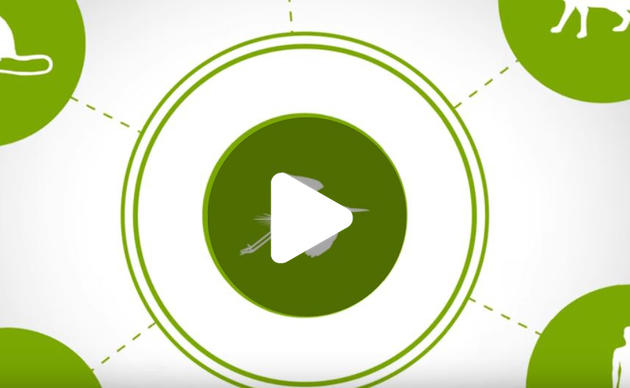
Aug. 2, 2018 – In northwest Minnesota lies an ecoregion that exists nowhere else in the U.S. More than 240 acres of this beautiful Tallgrass Aspen Parkland is now protected in perpetuity thanks to conservation easements. The easements were secured by Audubon Minnesota and the Minnesota Land Trust who worked closely with landowners Greg and Crystal Peterson, Bruce Paine, and Jason and Janet Smude.
These properties are part of a larger complex of public and private lands that are vital to birds that live in or migrate through Kittson County. The properties both fall within an Audubon Important Bird Area (IBA) and one falls within a Minnesota Prairie Conservation Plan Core Area.
“Nothing is more critical for the continued success of birds than permanent land protection,” said Alex Wardwell, Restoration Specialist at Audubon Minnesota. “Several bird species in decline rely on lands like these. Birds like Wilson’s Phalarope, Nelson’s Sparrow, and Yellow Rail. We see grouse and American Woodcock flush when walking through these parcels. Thanks to the landowners, these properties will continue to offer a diverse array of native habitats for birds, people, and other wildlife to enjoy long into the future.”
Protecting private land can help to maximize the impacts of other protected public and private lands, by creating corridors for wildlife and larger habitat blocks, including Elk. The fact that the land will stay private means landowners will continue to pay property taxes, hunt, recreate, and manage the land as they have been.
“These properties are part of a larger complex of protected private and public lands, spanning over 20,000 acres,” said Wayne Ostlie, Director of Land Protection at the Minnesota Land Trust. “By using permanent conservation easements to protect this important habitat, these families are showing that it’s possible to protect the places of greatest conservation value in our state while still keeping the land in private hands.”
“We knew we wouldn’t be developing half our land, and wanted to keep it for hunting and recreation, so a conservation easement felt like a good fit,” said Janet Smude of her property. “Our neighbor had protected his land, which connected to state land, so it made sense to join our land to create a larger protected area.”
Greg Peterson originally bought his land over 30 years ago, primarily to use for hunting. By protecting it with a conservation easement, he hopes that future generations will continue to enjoy the land as he has. “I plan to keep this land, and will try and keep it in the family. With this easement, it will stay exactly as it is,” said Peterson.
“Protecting the water quality and critical wildlife habitat of our state depends on the generous spirit of Minnesotans like Greg, Crystal, Bruce, Jason, and Janet,” said Kris Larson, Executive Director of the Minnesota Land Trust. “By taking this important step to preserve their land forever, they are ensuring that the wildlife and birds that rely on these areas will have habitat long into the future.”
These permanent conservation easements were made possible thanks to funding from the Outdoor Heritage Fund, as appropriated by the Minnesota State Legislature and recommended by the Lessard-Sams Outdoor Heritage Council (LSOHC). With support from LSOHC, the goal of the partnership is to preserve essential wildlife habitat in the Tallgrass Aspen Parkland eco-region.
A conservation easement is a voluntary, legal agreement between a landowner and a land trust or other qualified agency that permanently limits certain uses of land in order to protect its conservation values. Landowners continue to own and enjoy the land and pay property taxes. Once created, the conservation easement is binding on all future owners of the property.
Audubon Minnesota is a nonprofit dedicated to addressing the biggest threats to Minnesota’s birds through science, advocacy, outreach, and on-the-ground conservation. Since 1979, Audubon Minnesota has been protecting birds and their habitat.
The Minnesota Land Trust protects and restores Minnesota’s most vital natural lands in order to provide wildlife habitat, clean water, outdoor experiences and scenic beauty for generations to come. www.mnland.org
# # #
Contact Information
Ashley Peters, Audubon Minnesota, 952-715-1209
Alex Tsatsoulis, Minnesota Land Trust, 651-917-6289



